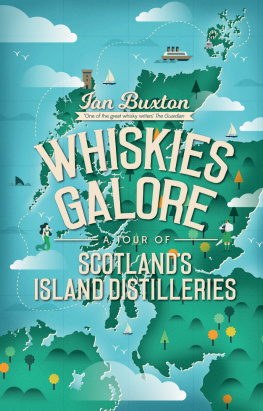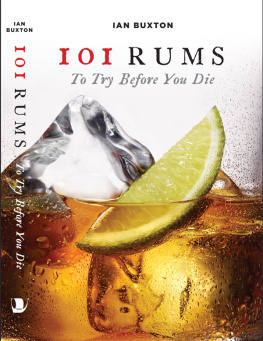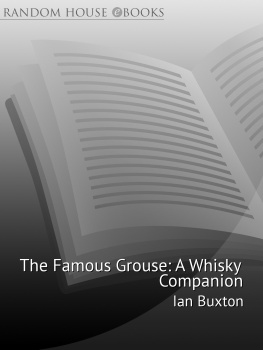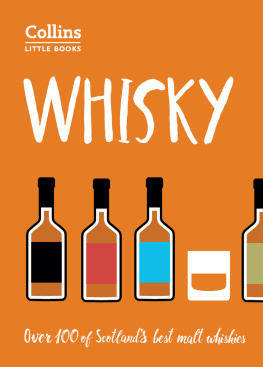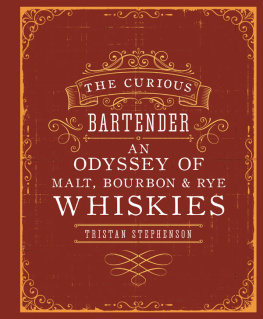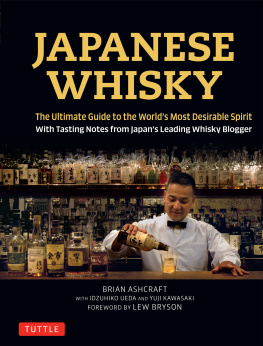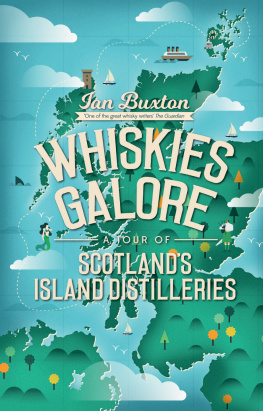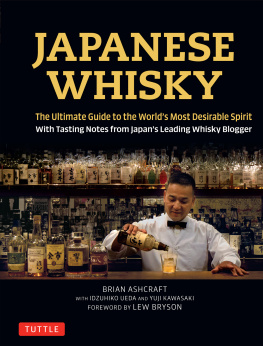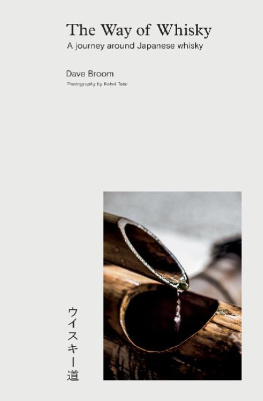Contents
Guide
WHISKIES
GALORE

First published in Great Britain in 2017 by
Birlinn Ltd
West Newington House
10 Newington Road
Edinburgh
EH9 1QS
www.birlinn.co.uk
ISBN 9780857903518
Copyright Ian Buxton, 2017
All rights reserved.
No part of this publication may be reproduced, stored, or transmitted in any form without the express written permission of the publisher.
The moral right of Ian Buxton to be identified as the author of this work has been asserted by him in accordance with the Copyright, Designs and Patents Act 1988
British Library Cataloguing-in-Publication Data
A catalogue record for this book is available
on request from the British Library
Text design by Jules Akel
Printed and bound by CPI Mackays, Chatham, Kent
T HIS BOOK is dedicated to my mother and father, who first took me to Scotlands islands. Not that I had any choice in the matter, and they were conscientious enough not to leave me there tempted though they no doubt were. But thanks anyway. And to my wife, who has put up with my usual distracted nature and inability to engage in matters domestic while I was writing it. Im told that wasnt easy.

CONTENTS
THIS IS AN ACCOUNT OF A PERSONAL JOURNEY. Now I dont know if you want to know where I was born, and what my perfectly agreeable middle-class childhood was like, and how my parents were occupied and all before they had me, and all that Holden Caulfield kind of angst, but were here to talk about malt not rye, so I wont be going into it, if you want to know the truth.
To start with, although we shall encounter whiskies galore (and a few gins for good measure), this is not your run-of-the-mill whisky book. That is to say it does not catalogue histories, at least not in any consistent way; capacities and outputs are recorded only intermittently; expression after expression is not laboriously listed and detailed tasting notes made, and there are very few artful photographs of grizzled chaps rolling barrels or serious-looking coves staring moodily at a tasting glass full of liquid illuminated by a fortuitous shaft of iridescent shimmering golden light. Grim industrial buildings have not been tastefully styled; neither have I romanticised dereliction, nor has an art directors soft-focus lens imposed spurious romance on a grimy and cobwebbed cellar. This is not whisky porn.
Why is that ? Well, if what you want is detailed information on equipment, still sizes, barley varieties, output, capacities and so on and so forth, or exhaustively documented lists of 1,001 different whiskies with lengthy and baroque tasting notes, there are many places to find those doubtless fine and important things whisky blogs, websites and books are there in splendiferous plenty, so enjoy. There seemed very little point in repeating what had already been so thoroughly well done by others, doubtless more panoptic in scope, conscientious in delivery and meticulous in presentation than me. At any event, a tasting note is only one persons opinion and an unreliable guide to the probability of your pleasure. Above all, avoid the absurdly spurious accuracy of a tasting score of 94.5 points or similar nonsense. Trust your own judgement; enjoy what you enjoy and dont let anyone else tell you otherwise.
Other people have compiled extensive lists and faithfully recorded output and so on, but when I started a similar inventory I very soon thought it pointless and unkind to impose another catalogue of such drudgery, however conscientious, on an un-suspecting world. Finally, and most importantly, that kind of book is redundant in the age of the internet. Chances are that by the time it is written, fact-checked, designed, proofread, printed and delivered to the shops it will be out of date and it will continue to get ever more out of date the longer it stays in print. The world of whisky changes very fast and this type of information is simply to be found faster and more reliably on the web.
However, I do find it interesting that in recent years Scotlands island distilleries have attained a special status in the eyes of many drinkers, and a romantic image has formed of island life and the drams produced there. Island whiskies, and to a lesser extent gin, continue to exercise a fascination and powerful emotional draw on consumers the world over. Their remarkable combination of heritage, mystique, remote location and, of course, the highly distinctive taste of many of them is often imitated but seldom bettered: they have a unique romance and attract visitors from round the world, especially Germany and Scandinavia. What is more, I have, quite by accident, joined a wedding party who had travelled from Singapore to be married and celebrate their union on Islay, so the appeal is clearly global.
So I set off with the loosely-defined hope that I might discover what Scotlands island distilleries are really about. Are they, as their enthusiastic disciples proclaim, really so different ? Is there some elusive quality involved or some spirit of place or something so remarkable about the people who distil on an island that makes their products intrinsically different and superior ? Or is that a self-serving myth, merely the creation of shrewd marketing experts looking to exploit any difference in a competitive world ?
In the process, what emerged was an entirely impressionistic ramble through my memories of the islands going back some fifty years and my more recent experience of Scotlands island distilleries. Some are more important than others and may receive more space, but that will depend on my personal relationship with them and their island. It is, if you will, a highly personal, whiskyfuelled journey through those islands with frequent diversions on topics which happen to amuse, interest or divert me.
Some people collect whiskies but never drink them. Some people may they get help soon even promote whisky as an investment, a trend upon which certain distillers have happily capitalised, leading to ever more elaborately packaged special bottlings of increasing cost and vulgarity and a general drift upwards in the price of whisky. All this is to be deplored by the genuine and righteous student of whisky who understands instinctively that whisky was made to be drunk and has no meaning until the moment of its consumption.
I despair of the whisky investment hucksters and I fear the craze will end badly. However, I understand the urge of the collector: I have lots of pens; more pens than strictly speaking I need, but the difference is that I wrote this book with them. You will have to indulge me, therefore, as the pens and the ink with which I wrote this book make cameo appearances throughout the narrative that follows. This book features aficionados, collectors and obsessives; and I, in my own small way, am one of them.
While in confessional mode, I really should acknowledge that although I have spent nearly half a century visiting Scotlands patchwork of islands, it would be wrong of me, as an outsider, to cast grand judgements upon them. Instead I offer you my thoughts, random and incoherent as they most definitely are, on Scotlands island distilleries to places, people and landscapes that have in common an existence, sometimes fragile, on the edge an edge physical, geographic, cultural and economic. And so, without further delay

